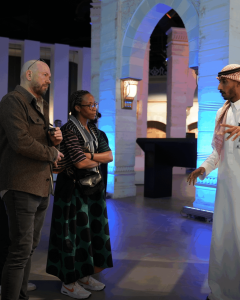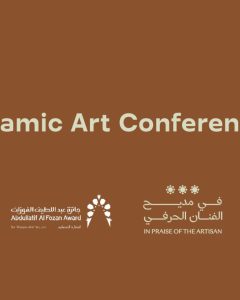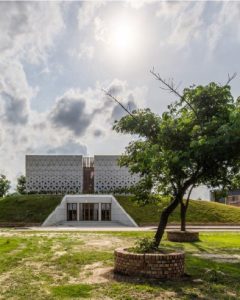The Mosque is a rich building typology with a great history, long architectural traditions and a wide potential for expression and symbolism. Contemporary mosque architecture shows an ongoing competition over representing this richness, producing varied outcomes that reflect the different cultures of architectural practice behind their conception. The term ‘culture of practice’ refers to the set of foundational ideological beliefs that inform the path of a certain mode of practice in architecture which in turn distinguish it from other modes of practice.Current trends of mosque design are often categorized loosely under four cultures of practice: the historicist, the vernacular, the regionalist, and the modern. The latter is a misnomer for contemporary technical-rational and formal oriented approaches that follow a more global understanding of architectural production. While the reductiveness of this kind of classification is apparent, still it serves a useful function as an analytic tool to identify the available and accepted cultures of practice in contemporary mosque architecture.The next set of articles will give an overview of each of these cultures of practice – as separate but not autonomous– and will show their influence on contemporary mosque architecture.
The first of these cultures of practice is the historicist/stylistic architectural culture. An architectural style is defined as an overarching condition that combine individual buildings despite the spanning extensive time periods, geographies and socio-cultural influences among these buildings. In mosque architecture, the historicist approach involves adopting revival architectural styles that often draw inspiration from grand periods of ‘Islamic’ architecture, creating a contemporary compositions based on one or more of these historical ‘Islamic’ architectural styles.The historicist/stylisticculture of practice considers itself the intellectual extension of the revival architectural development prevailed before the 20th century. This culture is rooted on the nostalgic way of seeing architecture of old days and the essential beauty of historic ‘Islamic’ architecture. It embodies the ideology that architecture should keep its cumulative development relying on the huge heritage of architectural styles that were ruptured by modernist architecture in the 20th century. It therefore often carries a dogma of anti-Modernist architecture seeing it as unconstructive and opposite to the natural architectural evolution. Nonetheless, in the current global – often Western dominated – architectural paradigm, ‘stylistic architecture’ is a problematic idea.
The idea of ‘style’ was popularised in the 19thcentury by the Austrian art historian Alois Riegl and later became the core of architectural discourse of 19thcentury Britain, then to rest of the Western world.This idea has been refuted in the 20thcentury when architects started to have independent individualities under the umbrella of modernist architecture which made a sharp break with the pre-existing revivalist paradigm (the Beaux-arts Classicism trend). At this time, style debates in architectural discourse were replaced by the Bauhaus ideas of levelling the distinction between fine and applied arts, reuniting creativity and manufacturing, stressing on experiment and problem solving, and completely breaking with historicism.On the other hand, historicist/stylisticculture of architecture has been flourishing in the Muslim world as a way for representing its identity against Western Imperialism then later as an identifier for its national architectural identity. However, as the architectural critic Nasser Rabat argues, while it started as a way to represent a particular identity, many of these historicist approaches are risking banality by merely copying images of old architecture that does not reflect the socio-cultural understanding of Islam and the contemporary Muslim world.Additionally, while these stylistic replicas may appeal to some, they are not easily reproduced with today’s building materials and craftsmanship and therefore creating an unauthentic – however shiny – replicas of grand old architecture. Interestingly, the stylistic culture of practice in mosque architecture often flourishes in the case of a Muslim communities in non-Muslim countries. In this context, the mosque is a very important collective sign of the Muslim community’s presence, and usually decorated with excessive ‘Islamic’ ornamentation as if to emphasize that space is a Muslim property. This conscious desire on the part of Muslim communities to be seen as being Muslim, pushed for the idea of using clearly identifiable, universally “Islamic” elements, borrowed from a mixture of historical periods of ‘Islamic’ architecture promoting some kind of a global pan-Islamic stylistic culture of architectural practice.
Islamic architectural stylism is always debatable topic that has directly influenced mosque architecture. As a culture of practice, it still has currency in the local architectural market, however, not much shared grounds with the global architectural paradigm.





